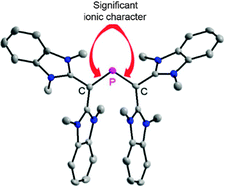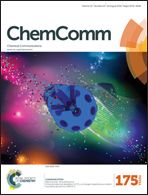Bis(carbodicarbene)phosphenium trication: the case against hypervalency†
Abstract
The first example of a phosphenium trication has been prepared by using the exceptional nucleophilic properties of a carbodicarbene ligand. According to theoretical investigations the trication contains quite polarized P–C bonds suggesting a substantial contribution from the dative bond model. As one of the resonance forms for the title compound depicted a hypervalent phosphoranide we also showed that phosphoranides, in general, do not contain a hypervalent P centre.



 Please wait while we load your content...
Please wait while we load your content...